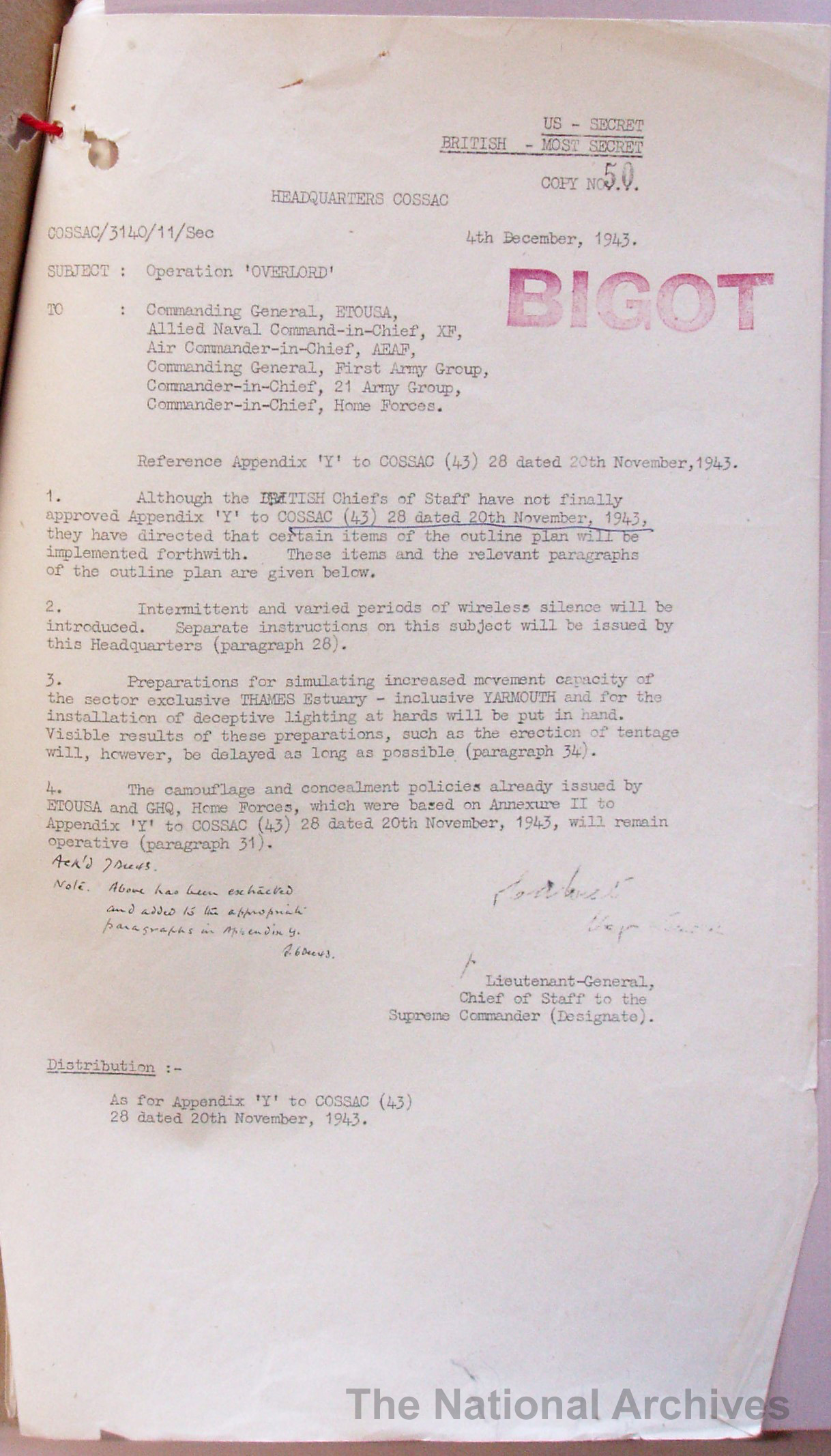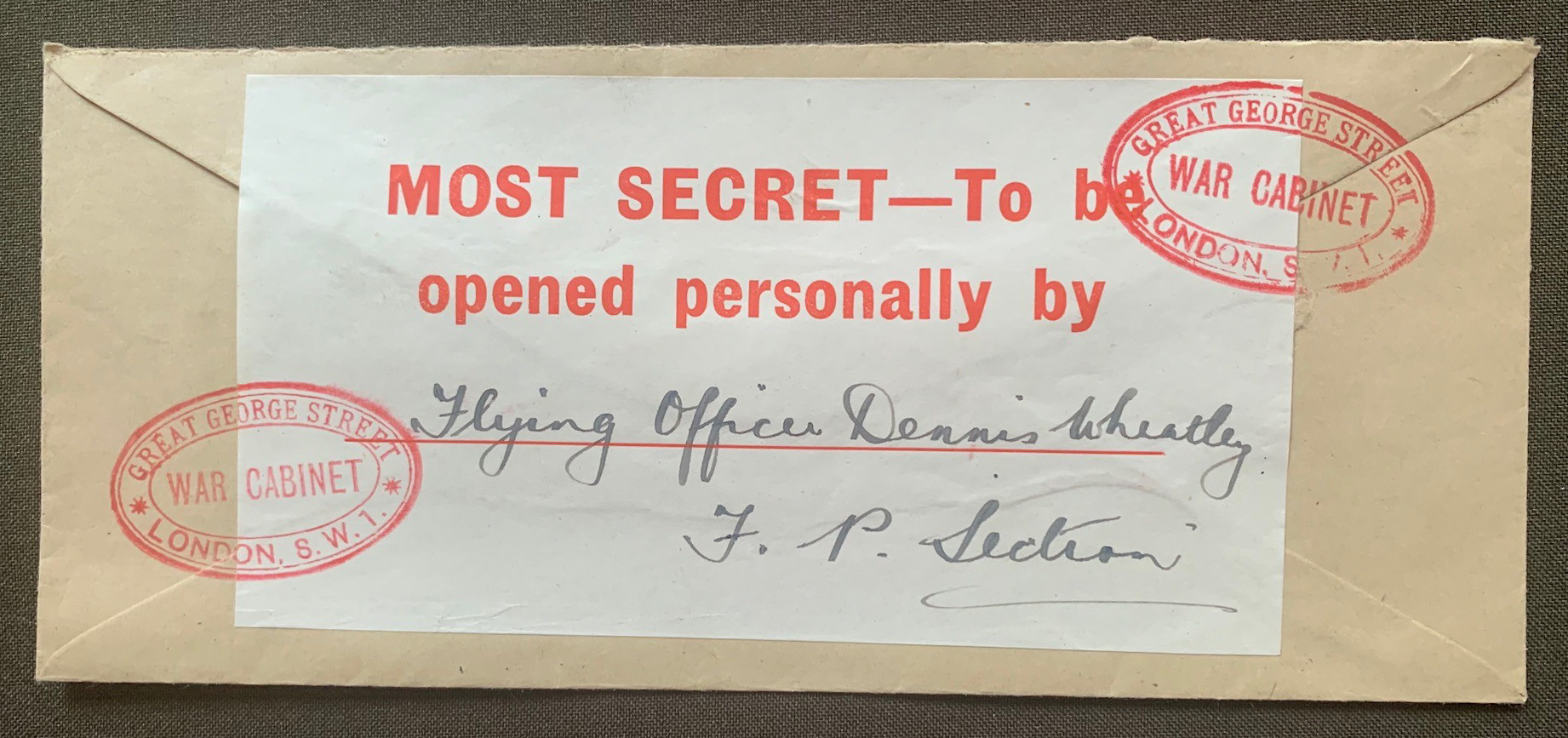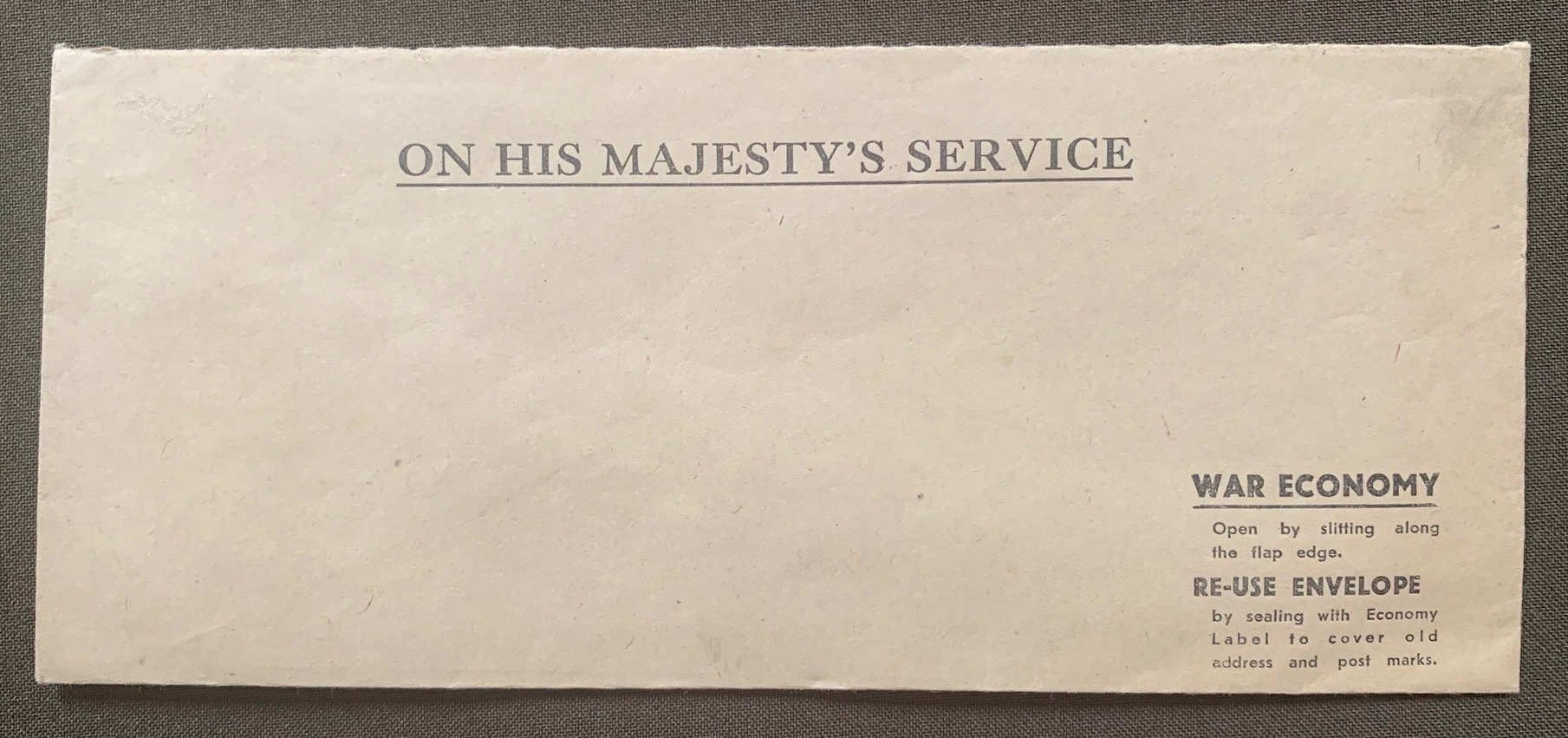
 |
Floor Plan |  |
The Dennis Wheatley 'Museum' - Dennis Wheatley in World War II: a supplement
Security classifications - ’BIGOT‘
In a post-war note, Dudley Clarke explains how used LCS staff are to handling Top Secret documents
Click on the image to enlarge
During the Second World War, the two highest security classifications were ‘Secret’ and ‘Most Secret’, although ‘Most Secret’ was later changed to ‘Top Secret’.
Wikipedia explains the differences in the current classifications as follows:
| Secret: | Information whose side-effects may be life-threatening, disruptive to public order or detrimental to diplomatic relations with friendly nations. |
| Top Secret: | Information... whose release is liable to cause considerable loss of life, international diplomatic incidents, or severely impact ongoing intelligence operations. |
While most of the material on which DW worked was ‘Most Secret’, as DW explained in his memoirs, so many people had access to ‘Most/Top Secret’ documents that a higher security classification had to be created, and that was ‘BIGOT’:
Towards the end of April we sent the Chiefs our final draft of Plan ROYAL FLUSH which was an important subsidiary of BODYGUARD. We also divided the Deception Plan into two parts, FUSAG North and FUSAG South.
The original of the paper was stamped on the top with the word BIGOT in letters three-quarters of an inch high. Hitherto the degrees of secrecy had been ‘Confidential’, ‘Secret’ and ‘Most Secret’, the latter having some months earlier been changed to ‘Top Secret’, so as to come into line with American procedure. But the nearer we came to D-Day, the more people had to be let in to the know about our preparations for OVERLORD; railway and post-office officials harbour masters, dock superintendents and scores of other civilians, not to mention the ever-increasing numbers of officers of the Services who had various parts to play. In consequence, I.S.S.B. became greatly worried about security and, to limit the number of people having access to documents of the very highest security, created this super-degree by which only a very limited number of officers were allowed to see papers stamped BIGOT.
All of us in L.C.S. were, of course, on the BIGOT list, but in our case it made little difference as our papers always travelled to other departments in red or black boxes, or, failing that, ‘by hand of officer’, the envelopes being sealed with a label having on it in large red letters, ‘To be opened only by...’, then one wrote in the name of the officer for whom it was intended.
The comments in DW’s unpublished memoirs continued about breaches of security by the senior-most officers:
‘Witness Alan Brooke posting off every night to his wife those letters, which were afterwards published by Sir Arthur Bryant as leaves from the Field Marshal’s diary, telling her the most jealously-guarded secrets. Had I done that to my wife and been caught at it, I would have been given ten years in prison.’
DW seems somehow to have forgotten here that he himself somehow took home scores of Top Secret documents which he used to write his memoirs. How he reconciled this with the above statement is unknown - perhaps he thought what he did was more excusable as he did it (one assumes) once the war was over.
To round this section off, I have included a letter written after the War to the Historical Section of the Cabinet Office by Dudley Clarke, which nicely explains how almost every paper in the possession of the London Controlling Section was ‘Top Secret’.
| References : | DW’s unpublished memoirs on Alanbrooke’s breach of security) and the ‘BIGOT’ classification. An account of the BIGOT’ classification also appears in ‘The Deception Planners’ on pp181-2. |
| Provenance : | Top image courtesy of The National Archives (WO 205/3) |
| Bottom image courtesy of The National Archives (CAB 103/177) | |
| Other images - Private Collections |




